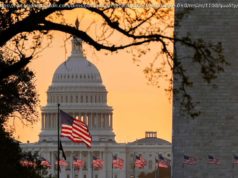All across the country, people have been riveted by the reports and images of the destruction Hurricane Michael wreaked on Panama City and Mexico Beach…
All across the country, people have been riveted by the reports and images of the destruction Hurricane Michael wreaked on Panama City and Mexico Beach on Florida’s Gulf Coast.
But Michael’s fury wasn’t limited to where saltwater laps onto sugar-sand beaches. Far from the coast, back among the piney rolling hills where Florida’s Panhandle gives way to Georgia and Alabama, small country towns also were walloped by the most-powerful storm to hit the area since record-keeping began around the time of the Civil War.
And when the winds passed, country folk began to do what country folk do: They rolled up their sleeves and got to work.
Nathan Hooppell and his brother, Nick, huddled with their parents in their Marianna, Florida, home when the inner core of Michael passed over Jackson County with winds estimated at 140 mph.
Oct. 13: ‚I don’t have anything left‘: Hurricane Michael survivors scramble for food, water as death toll rises
Oct. 13: Wife held vigil over husband’s body as hurricane roared: ‚I had that much longer with him‘
“It was like everybody’s been saying, like a bomb went off,” said Nathan Hooppell. “The sky was a sickly yellow gray. We’re a wooded community, and the tree tops as far as the eye could see were gone.”
“It was pretty terrifying,” said Nick Hooppell. “We were breaking down. We were crying. I mean, no one was prepared for this. We stood in the room. We prayed. Every time you wanted it to stop it would hit harder and harder and harder.”
Jackson County was in shambles Friday, two days after Michael made landfall in Mexico Beach, about an hour south of Marianna.
The hurricane knocked down countless trees and power lines, ripped brick facades and roofs off buildings and rendered much of the road system impassable. Power was out countywide, and emergency officials said it might take a month before the lights come back on. The water system failed after mains broke and pumps stopped working.
Caleb Hoffman and his family got a rude introduction to the Sunshine State’s severe weather.
Hoffman, his wife Kaytlnn Auxt; daughters Gabby, 2; Julie, 3 months; and 1-year-old son Dominic moved to Blountstown – about 50 miles north of Mexico Beach – from Liverpool, Pennsylvania, in March to build better lives for their kids.
Michael ripped the roof from their three-bedroom, one bathroom house just north of Blountstown, a small town left as wasteland by the storm’s wind.
They took shelter at Blountstown High School, which also had portions of its roof ripped off. With no family or friends, they are on their own. Hoffman said returning to their house in shambles was nearly unbearable.
The tiny town was cut off from contact with the outside world until Thursday night when officials with Liberty County Emergency Management were able to establish a connection with state officials with a HAM radio.
“I don’t know of any houses without damage,” said Rhonda Lewis, Liberty emergency operations center director.
Oct. 13: Hurricane leaves children without a school, parents struggling to provide normalcy
Oct. 12: How Hurricane Michael transformed Florida
Sheriff Glenn Kimbrel said there was not a single road not impacted by downed trees.
“I would equate this with a hurricane with an F5 tornado rating, but it lasted about 3 hours. Catastrophic,” Kimbrel said. “Anywhere you travel in this county, it looks like a bomb exploded over, under, in, you name it, in this county.”
In Quincy on Friday, a National Guardsman waved in carloads of residents desperate for food and water.
They swarmed the grounds of the Gadsden County Jail, one of six distribution sites that shot up countywide two days after Michael ravaged the Big Bend. Four deaths in the county have been attributed to the storm.
With rifles slung over their shoulders, uniformed soldiers shouted orders to quickly shuffle supplies along. Volunteers mixed in with deputies and Red Cross officials. They all hauled packs of water, tarps and ready-to-eat meals that typically nourish troops deployed to harsh lands.
Sarah Figgers waited in the car for her supplies. She was headed to the Shaw Quarter neighborhood, where she was raised.
She could hardly recognize the neighborhood. Three trees blocked the entrance and exit of some streets. Residents were trapped unless they climbed their way out.
Oct. 12: Carport slams through house in freak accident blamed on Michael, killing 11-year-old girl
Oct. 12: ‚Never seen anything like it‘: Searchers dig in rubble of seaside town slammed by Michael
“The trees are huge,” said Figgers. “I’ve never seen it this bad where almost every other street, every other house looks like they have trees down in the back and front yard, trees down on houses and trees everywhere.”
By Friday, people across the Panhandle were working hard to restore some semblance of normalcy to their tiny, close-knit communities.
In Marianna, people with chainsaws and Bobcats spent Friday helping dig their neighbors out of the debris. Rocky Weaver, a home builder, three sons and several friends from South Florida drove around near Chipola College clearing roads and giving out water.
“You look around and there’s trees and roofs everywhere around us,” Weaver said. “I went down to Homestead after Hurricane Andrew, and it looks very similar to what Andrew did.”
“We’re accomplishing great feats at bringing this county back up and running,” said Mark Foreman, chief of Jackson County Fire and Rescue. “It’s going to take time. But we’re working 24/7. So everyone needs to know that help is coming.”
Contributing: Jeff Burlew, Nada Hassanein, TaMaryn Waters and Karl Etters, the Tallahassee Democrat. Follow John McCarthy on Twitter: @JournalistJohnM
Oct. 12: Hurricane Michael’s fury will have longstanding environmental impacts
Oct. 12: Florida’s Bay County, Mexico Beach unsafe to return and ‚it’s going to be a long time,‘ FEMA officials say
Oct.
Start
United States
USA — Political Hurricane Michael's destruction wasn't limited to the Florida coast






